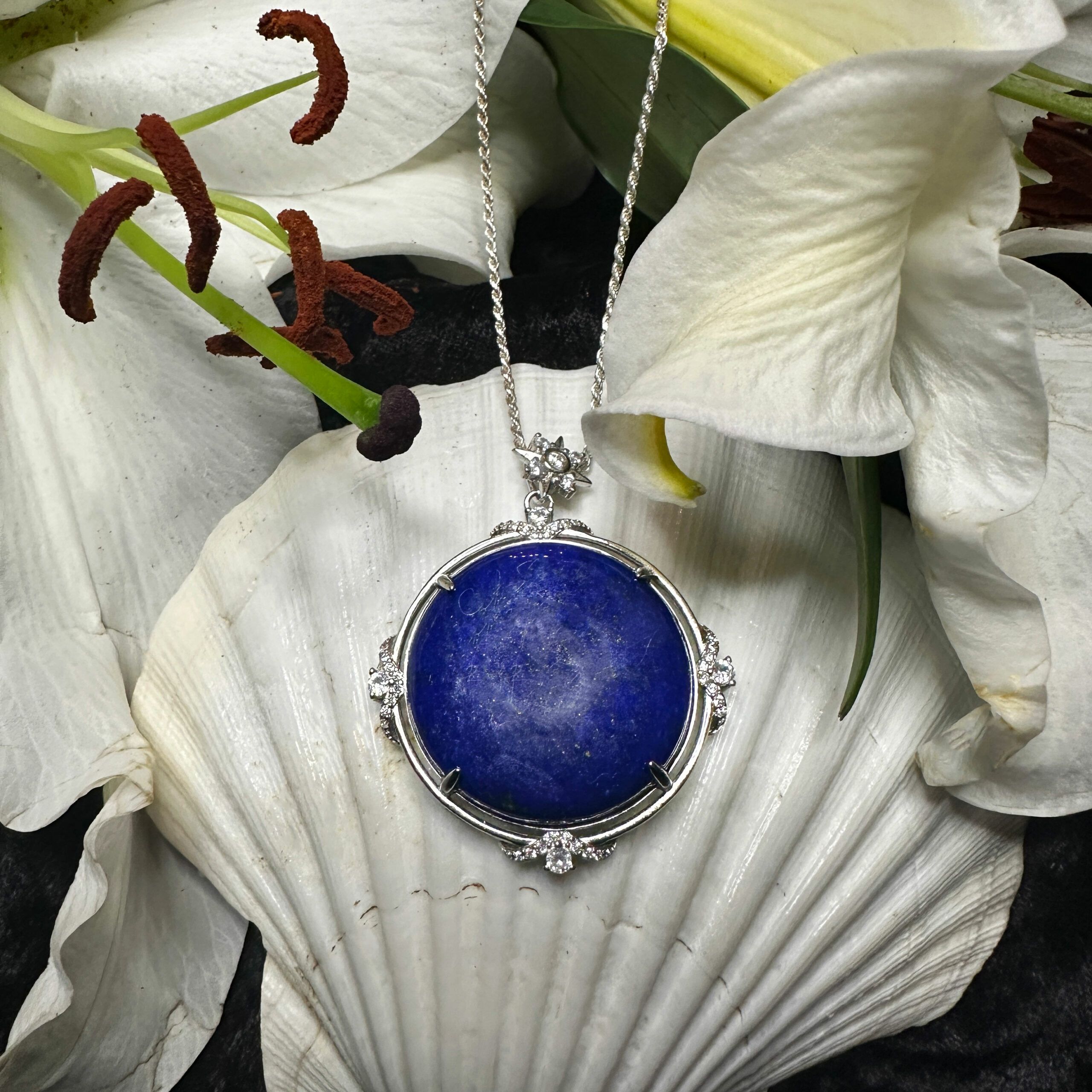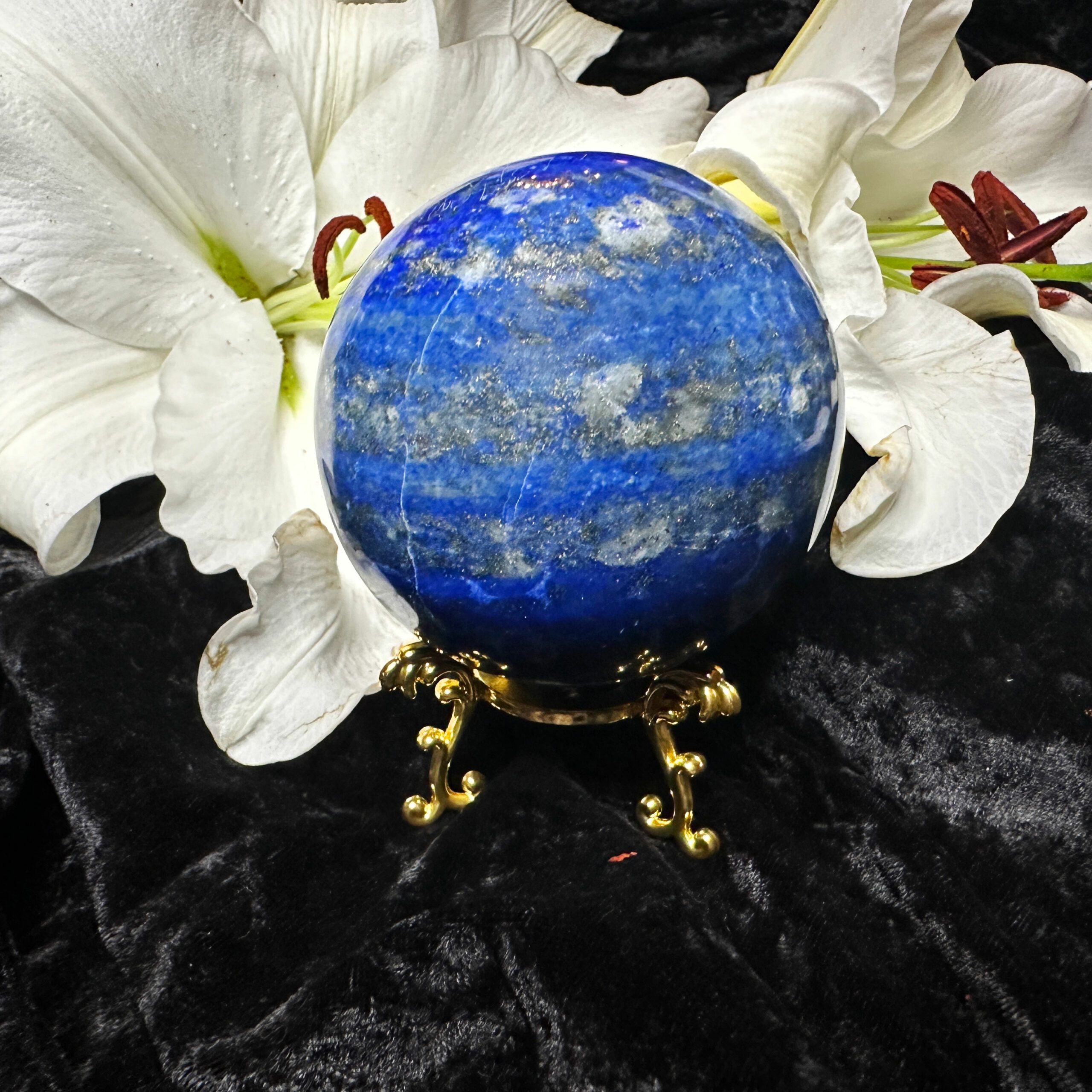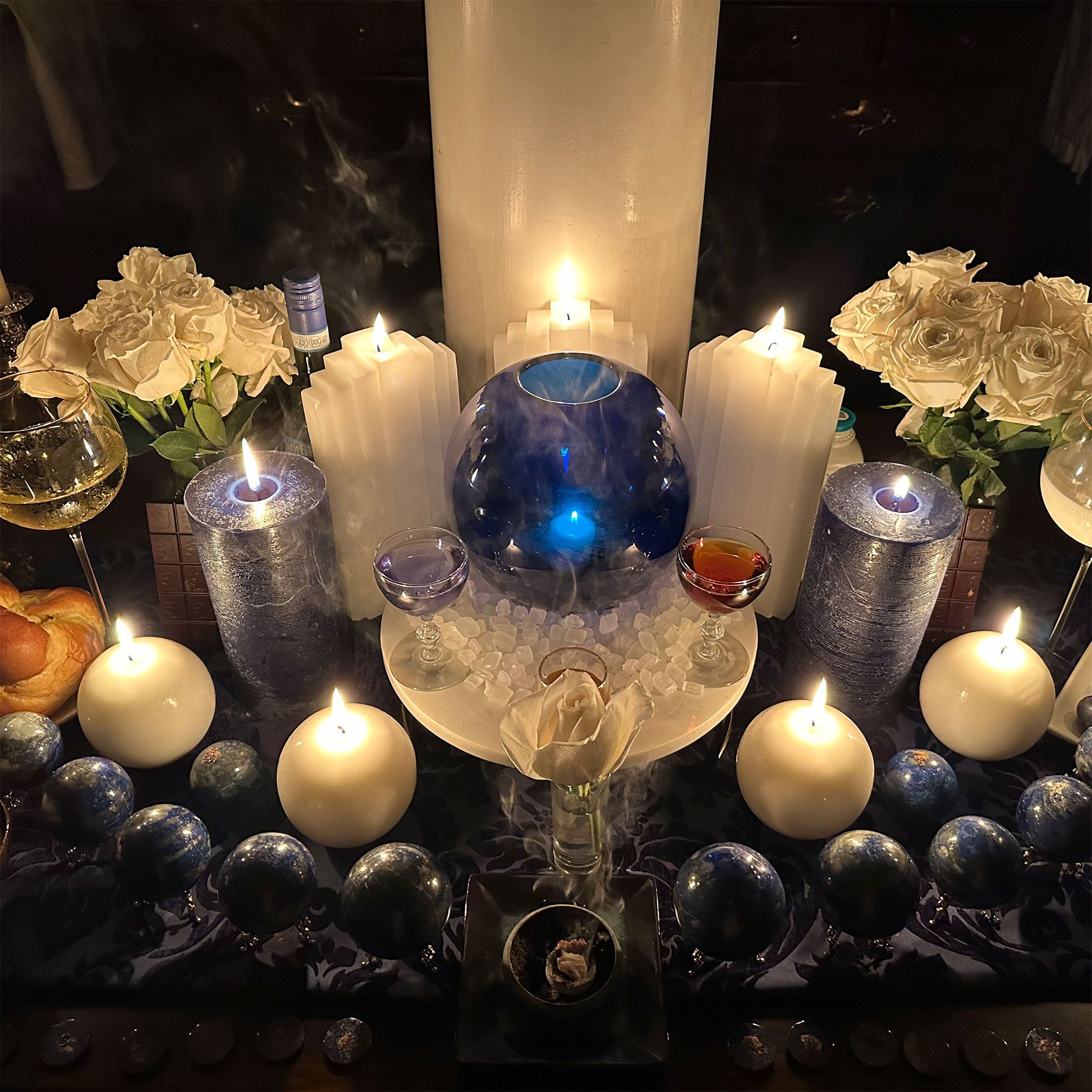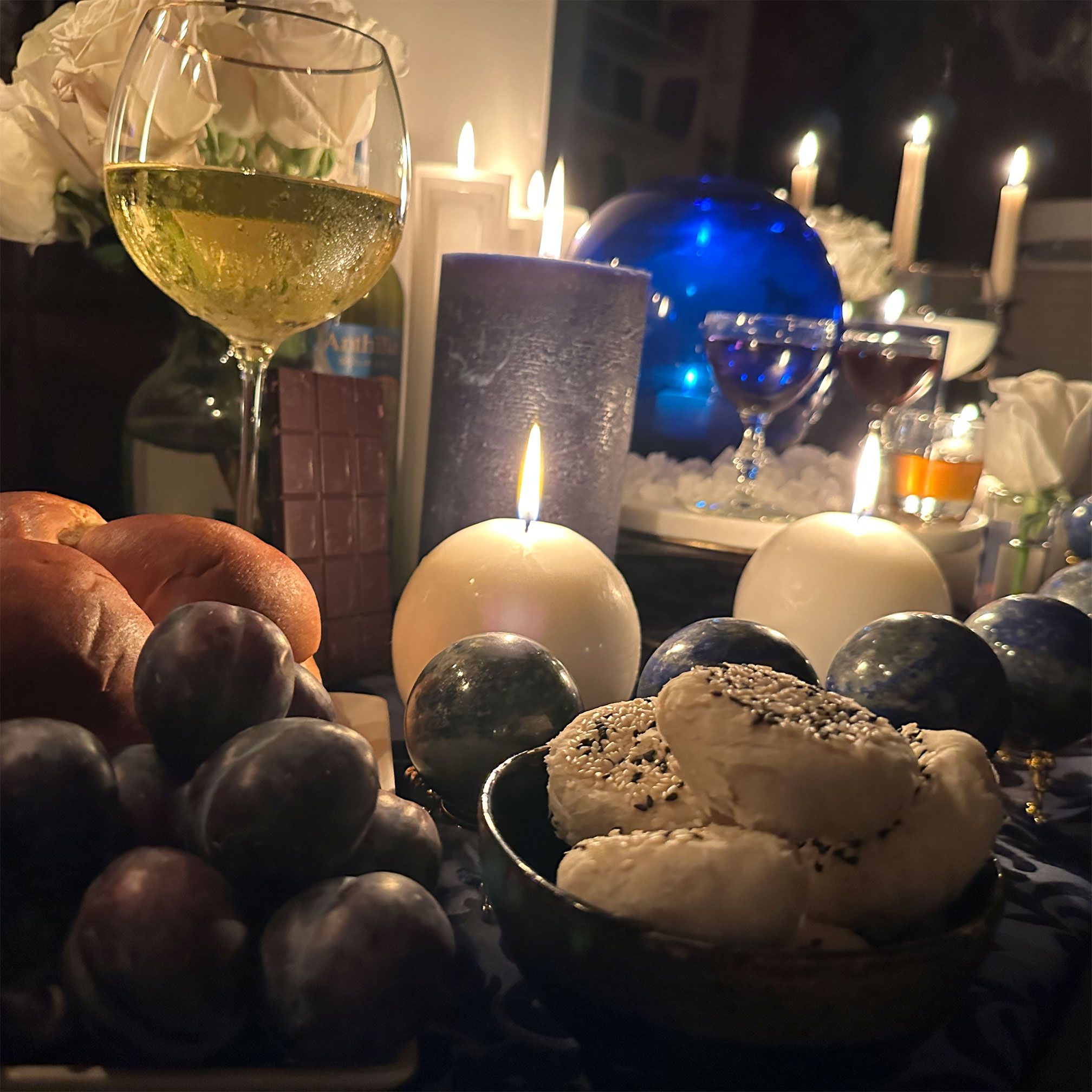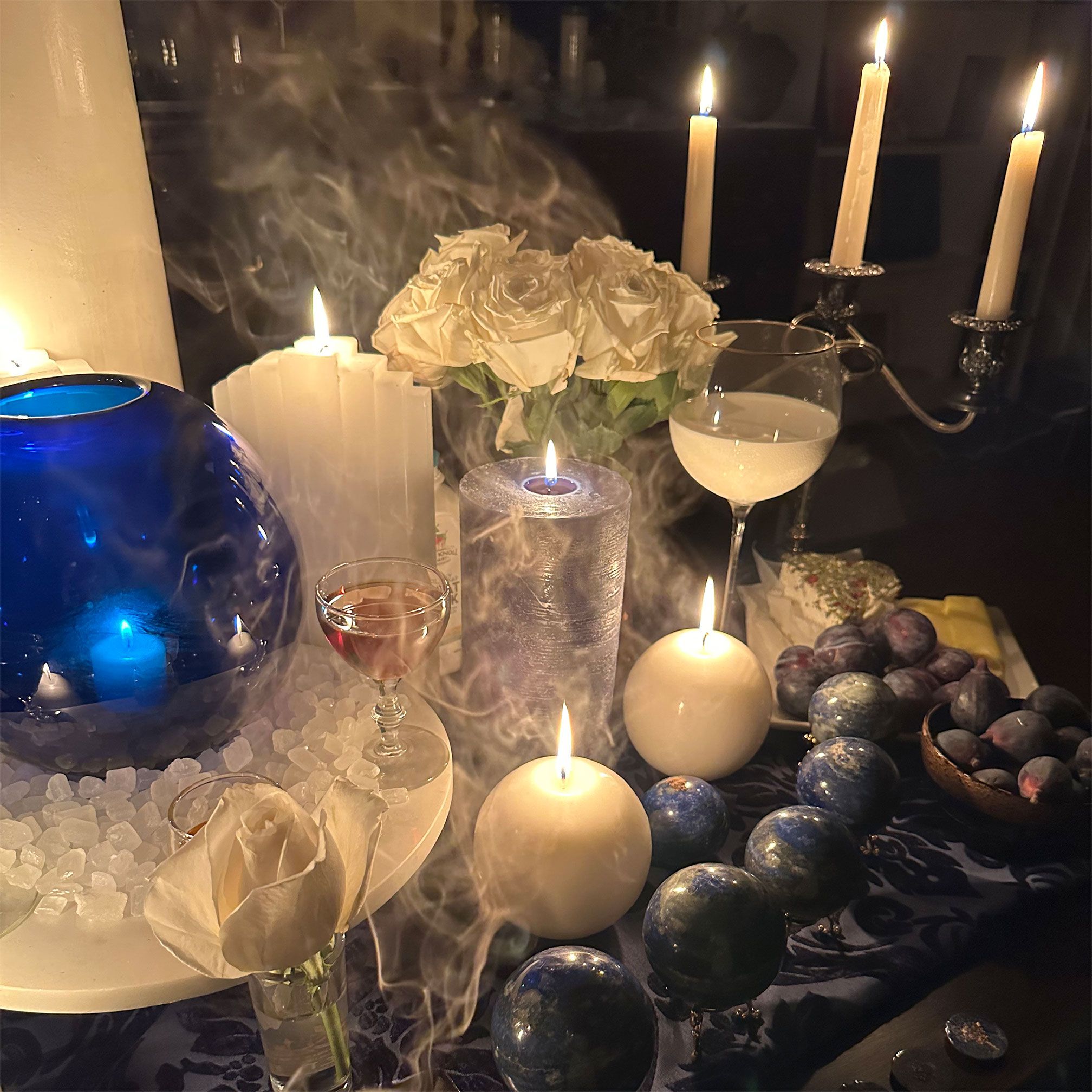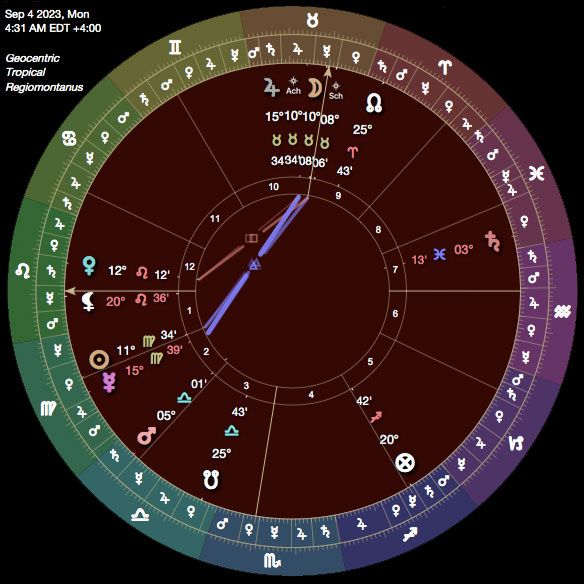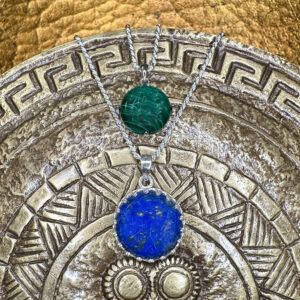Description
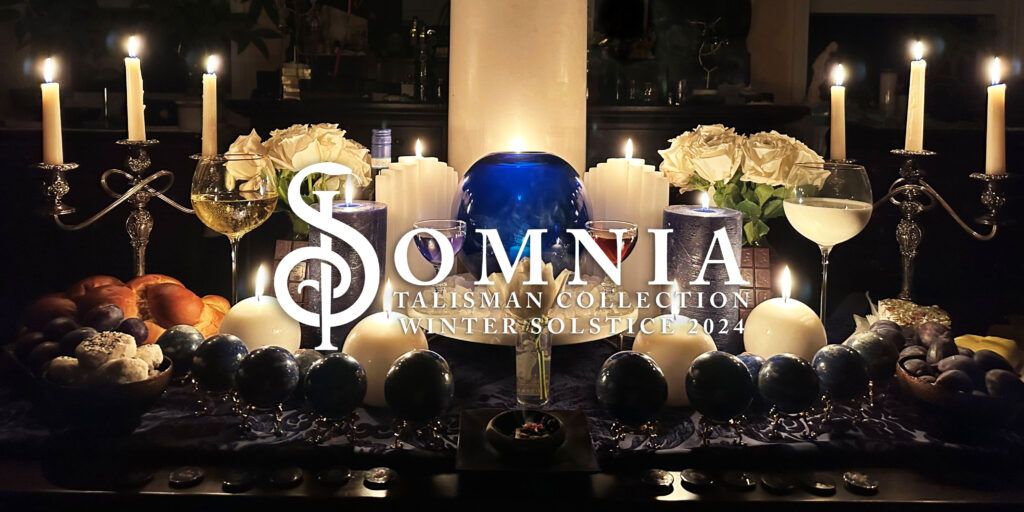
Part I. Constellational-Relational Images
Out of the various types of astrological talismans, constellation talismans arguably pose one of the greatest challenges to any vestiges of a materialist worldview to which we may still cling. For one thing, with the modern astronomical knowledge we have, some part of us probably knows that those stars are surely hundreds if not thousands of lightyears away from one another and in fact have little if any three-dimensional spatial relationship. For another, given how contemporary cosmology teaches us that the universe sprung out of random, chaotic motion, some part of us might imagine that any grouping of stars could count as a constellation, and thus there is nothing essential about any given contingent grouping of stars.
And yet.
Go outside on a clear night with Taurus culminating and just try to tell yourself that those particular five bright stars do not go together.
Contrasted with planetary and fixed star talismans, constellations also demand a somewhat different understanding. Although the background would shift, Regulus would look like Regulus whether we were looking at it from earth or from Alpha Centauri; likewise, Venus would still be Venus if we were viewing her from the Moon or from Saturn rather than from earth. On a different planet, however, what looks to us like the Big Dipper or the Great Bear might look like another object or creature, or maybe even like nothing at all.
Unlike individual cosmic objects (what astrophysicists would refer to as ‘point sources’), constellations root themselves essentially in the earth-sky relationship. They look like that because they are there and we are looking from here. Viewed from another angle or distance, they would shift and morph: all images would shift, some would dissolve into the background, others would pop out. Only because of the impossibly vast distances between us and the stars—and hence miniscule parallax—do the constellations not phantasmagorically shift across the many nights, dancing into a flux of different forms.
The foundation of the talismanic art consists in how the “images of heaven” are mediated to us through the movements and “nature of the stars and signs” (Maslama al-Qurtubi, Picatrix, Book II, Chapter 2). Images depend on how they are seen. Constellation talismans, in our view, most powerfully underscore our inherently relational grasp of the images of heaven. Although the forms may be eternal and unchanging, we understand them in and through time, from a particular place in space.
Although the modern scientific worldview of secular materialism treats subjectivity as a kind of ignorable epiphenomenon or embarrassment of nature, constellation talismans invite us into the intimacy of divine relationality, highlighting how our particular and idiosyncratic human ways of seeing and grasping the universe are themselves thresholds that open into treasure stores of meaning and power. For the images as we apprehend them express themselves to us, to our human minds shaped by capacities for sight and hearing and taste and touch completely unbeknownst to most of the material and celestial worlds.
What we can think and what we can dream essentially relies upon our particular lifeworld. Our daylight god images and nighttime dreams accumulate in familiar ways, aggregating into tropes, family resemblances, and analogies that highlight shifting perspectives on the images of heaven like dappled and ever-shifting plays of light upon the waters. Humans dream the dreams we tend to dream. Falcons do not dream of their teeth falling out. Dolphins do not dream of money. And who could fathom what slow and ponderous stories of creation the stones rehearse within their long-slumbering imaginations as the mountains walk across their ancient beds?
Taking this subjective element as a woeful limitation or shameful failure of our knowledge of the cosmos would represent, so we believe, a misunderstanding of the relationship of the many to the One, akin to the unnecessary mistrust and hatred of the material that has historically appeared in several expressions of Neoplatonic thought.
If a dolphin could make a talisman, one imagines that the images they would carve upon a stone to unlock the gifts of Jupiter or Saturn would look different than ours. And if we were to carve their images, the key might not fit our lock. Perhaps we cannot know. The images of the constellations, however, invite us into this mystery of relationship. The power might reside in the heavens, but we access it from here on earth. Whatever multiplicities and hierarchies we construct, this relationality reminds us that they are merely ways of imagining one thing.
Part II. Cassiopeia: Restoration & Slumber
We have noted in previous collections that the magical effects of fixed star talismans frequently run contrary to their mundane significations. Here too, the mythological meanings and indications of the Cassiopeia constellation more or less completely oppose the magical gifts of Cassiopeia talismans.
Having boasted that her daughter, Andromeda, was more beautiful than the Nereids (the sea nymphs), Cassiopeia unleashed the wrath of Neptune, father of the Nereids, who sicked the sea monster Cetus on the kingdom of Aethiopia, ruled by Cassiopeia and Cepheus. To save their kingdom, they sacrificed their daughter by chaining her to the rocks to be taken by Cetus. Rescued by Perseus, Andromeda went free. Not content to give up his revenge, Poseidon chained Cassiopeia to a throne in the sky, mirroring Andromeda’s ordeal.
Mythologically, we see vanity and privation in Cassiopeia’s story. Spinning head down around the pole star, the constellation itself becomes a symbol of endless discomfort and punishment. Ptolemy’s significations of Cassiopeia mirror the imprisonment of Cassiopeia as well as her beauty and vanity: “The stars of Cassiopeia have the effect of Saturn and Venus” (Tetrabiblos, Chapter 9).
Magically, however, we have rendered her effects as Restoration & Slumber. Albertus Magnus writes of this constellation, “this sort of engraving upon [gems] that bring sleep and restore the members is said to give rest after toil and to strengthen weakened bodies” (De Mineralibus, Book II, Chapter 5, tr. Dorothy Wyckoff). Camillo Leonardi similarly writes of the Cassiopeia talisman, “Its virtue is to ensure health and to heal sick and weary bodies. [It] gives rest and calm after toil; similarly, [it] brings friendly and sweet sleep” (Speculum Lapidum, tr. Margherita Fiorello, p. 31).
On the Slumber side of things, prior to attuning to this talisman, Idola’s mage Rain was having minor troubles with middle insomnia, waking in the middle of the night with occasional trouble returning to sleep. The first night with one of the Cassiopeia orbs brought vivid dreams of a strange woman guiding through plentiful banquets, secret chambers, and shapeshifting animals—as well as sleeping through the night and improved dream recall going forward. An ally testing the talisman also reported lucid dreams, intense somatic experience a la energy work, and awakening of ancestral gifts. Although we do not know how well these talismans would work for more extreme forms of insomnia, they do seem to bring improved sleep quality and dreaming. On the Restoration side of things, testing has shown these talismans helpful for chronic pain and migraines thus far (your mileage may vary!), and we are hopeful that they can bring solace for a variety of ailments.
Feedback has also ratified the profoundly relational understanding of constellations outlined in Part I. Because the images of constellations essentially rely on the earth-sky axis in a way that point sources / individual planets and fixed stars do not so much, our own personal-cultural relationship to the constellation, myths, and meanings may resound much more forcefully with such talismans. As such, we can recommend based on testing that the Restoration & Slumber talismans may reward more active relationality: re-consecrations, offerings, specific verbal requests, and in general more involved ritual work may help potentiate the gifts of these talismans to a more significant degree than some others.
We therefore also encourage those who adopt a Restoration & Slumber talisman to follow their own omens and synchronicities, and to explore their own cultural meanings of the Cassiopeia constellation as a guide rather than rely too heavily on the Hellenistic lore that comes down to us. Also, the ally who tested this talisman had a very intense initial experience after initial attunement—things smoothed out fairly quickly, but for folks wanting to mitigate potentially disruptive adjustment periods we would recommend extra discernment about when to first make an introduction to your talisman.
As a final note, since one of our core values is transparency, we do highlight that Idola Stellarum is grateful to Clifford Low for providing this election, which was originally offered as a group working at the unfortunately canceled Astrological Magic Conference in 2023.
NOTE: As we clearly state in our guarantees and disclaimers, Idola Stellarum cannot guarantee any health outcomes related to our talismans, even in circumstances where health is a primary aim of a magical working. Health is collective and individual, and in magic, one’s shifting understanding of health can be as important an effect as physical change, though neither are guaranteed. Our talismans are not intended to diagnose nor treat any health condition, and anyone seeking medical advice or treatment should always consult with a licensed medical provider about any and all treatments.
Technical Details
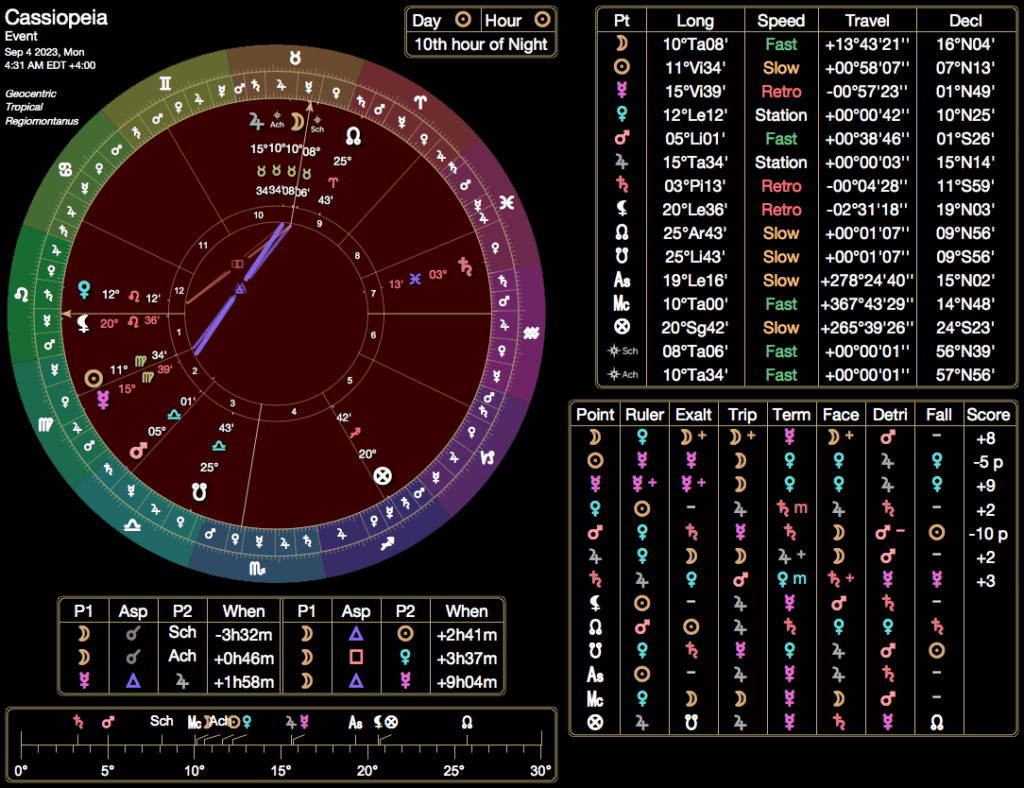
The Cassiopeia Constellation Restoration & Slumber talismans were ensouled on Monday, September 4, 2023 between 4:22am and 4:45am EDT.
Essential Features of the Election
For constellational astromagical elections, we require that a prominent indicator star of the constellation either rises on the Ascendant or culminates on the Midheaven. In this election, Achird (at 10°34′ Taurus), the indicator star for Cassiopeia that Christopher Warnock lists in his book Fixed Star, Sign & Constellation Magic, was culminating on the Midheaven.
Constellation elections also require the Moon to be in sufficiently good condition and applying to the indicator star of the constellation. Idola Stellarum only works with lunar conjunctions (rather than other aspects, such as sextiles or trines) to fixed stars in talismanic elections. In this election, the Moon was making a partile conjunction to Achird after having recently passed Schedir, the star marking the beginning of the Cassiopeia constellation. Luna was dignified by exaltation, triplicity, and face, and was moving with fast speed. Additionally, Luna was not making any applying aspect to a malefic planet, and was not subject to any serious afflictions. Her next applying planetary aspect was a trine to the Lord of the Ascendant, the Sun in Virgo.
Although we consider the condition of the Lord of the Ascendant to be a lesser factor in constellation elections due to their austere nature and remoteness from the sublunary realm, we always examine the Ascendant Lord for all elections since the first house represents the bearer of the talisman. In this election, the Sun was peregrine in Virgo and not applying to any malefic planet, and was therefore in acceptable condition.
Note that for constellation talismans, planetary hour and/or day are not essential considerations.
Further Magical Factors in the Election
This election benefitted from significant involvement from both benefic planets. The Moon was copresent with and applying by conjunction to Jupiter in Taurus, and was making a tight applying square to Venus in Leo (although astrological magicians have different perspectives on this issue, Picatrix considers any aspect to a benefic planet a fortitude—even the hard aspects of square and opposition).
Having a benefic planet in the 10th house is a significant fortitude in magical elections. As Ficino notes:
“[L]ook for Jupiter or Venus either in the ascendant or in the tenth place, for so they compensate for the debilities of the Moon.”
—Marsilio Ficino, Three Books on Life, Book III, Ch. VI, p. 271 (tr. Kaske & Clark)
Although the Moon was not substantially debilitated overall, the presence of Jupiter on the Midheaven within the Cassiopeia constellation was a lovely feature to catch in this election.
Reflection on Weaknesses of the Election
Although the Moon’s next approaching aspects were positive (trine to Sun, square to Venus), she was also in orb by trine to retrograde Mercury, which would be considered an affliction according to the electional doctrines of the Pictatrix. As indicated above, the presence of Jupiter in the 10th house mitigates this debility.
Recommendations
We consider this talisman beginner friendly and do not issue any particular cautions as to its use. We do emphasize, however, that if you are in a health crisis, please seek professional attention, not a talisman.
NOTE: As we clearly state in our guarantees and disclaimers, Idola Stellarum cannot guarantee any health outcomes related to our talismans, even in circumstances where health is a primary aim of a magical working. Health is collective and individual, and in magic, one’s shifting understanding of health can be as important an effect as physical change, though neither are guaranteed. Our talismans are not intended to diagnose nor treat any health condition, and anyone seeking medical advice or treatment should always consult with a licensed medical provider about any and all treatments.
Ceremonial Details
Gemstone & Talismanic Image
According to Camillo Leonardi, Cassiopeia’s “nature is Saturnian and Venusian,” and per Clifford Low’s recommendation, lapis lazuli was chosen as the stone for these talismans. Lapis lazuli is listed as a stone of Saturn by William Lilly in Christian Astrology and William Ramesay in Astrologia Restaurata, and as a stone of Venus by Agrippa in Three Books of Occult Philosophy, William Lilly in Christian Astrology, and Maslama al-Qurtubi in the Picatrix.
The image of Cassiopeia carved for this election was “a maiden sitting in an armchair, with her arms uplifted and bent.” According to Albertus Magnus, “this sort of engraving upon [gems] that bring sleep and restore the members is said to give rest after toil and to strengthen weakened bodies” (De Mineralibus, Book II, Chapter 5). According to the lore of Albertus Magnus, lapis lazuli is such a stone, and is said to have been “taken as a sure remedy for black bile [i.e., melancholia] and quartan fever, and for fainting caused by the vapours of black bile” (Book II, Chapter 20).
Ritual Setup
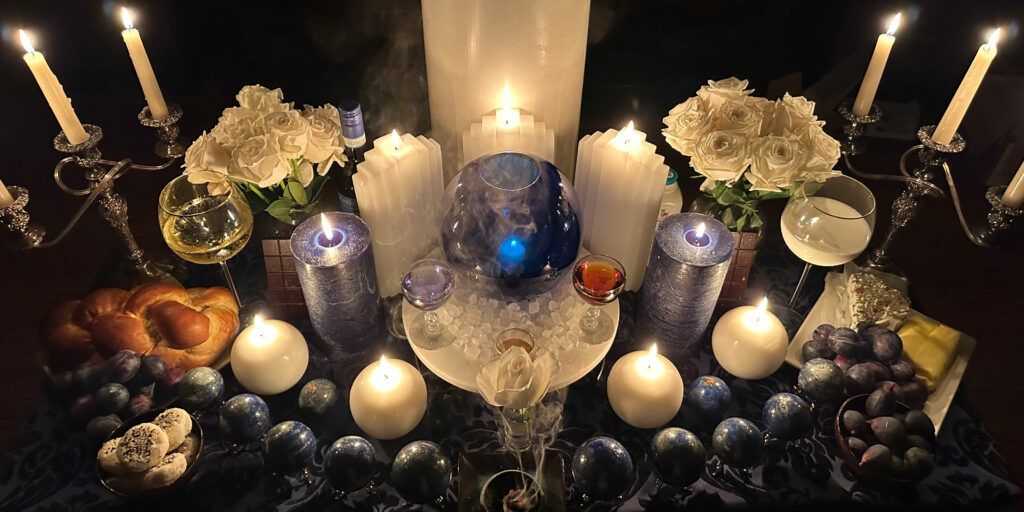
Our astromagical lore on the constellations is relatively slim, and so the color scheme and offerings were a bit more spirit led than guided by traditional sources. The altar to Cassiopeia that we erected prior to the working involved a background of deep blue punctuated by white pops of candles and roses. Offerings fitting the color scheme and the mixed Saturnine and Venusian nature of the constellation were offered in profusion: sweets, fruits, cheese, butter, cream, wine, chocolate, and a dozen white roses graced the altar.
Suffumigation
Suffumigation and incense offerings consisted of high quality Yemeni myrrh mixed with valerian root.

